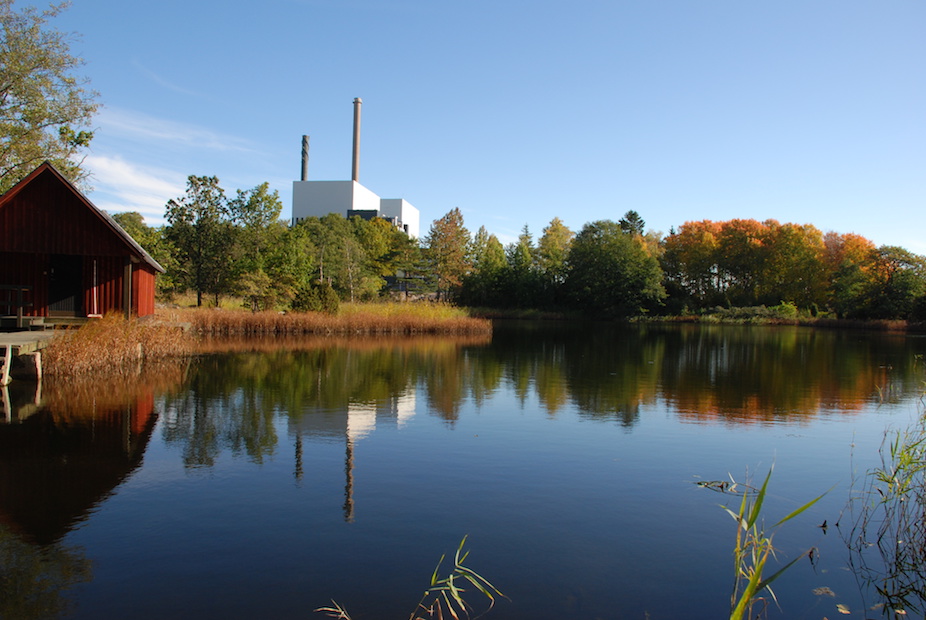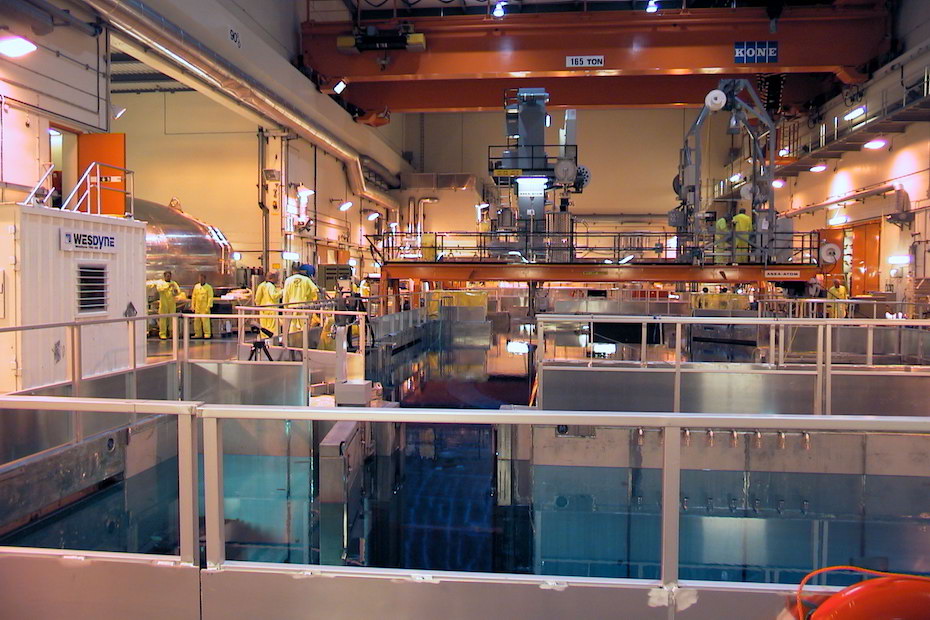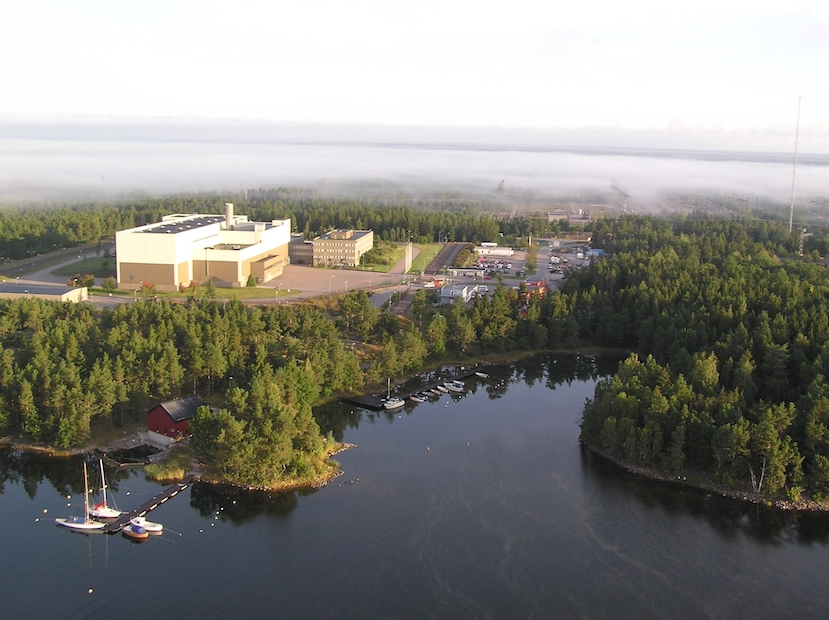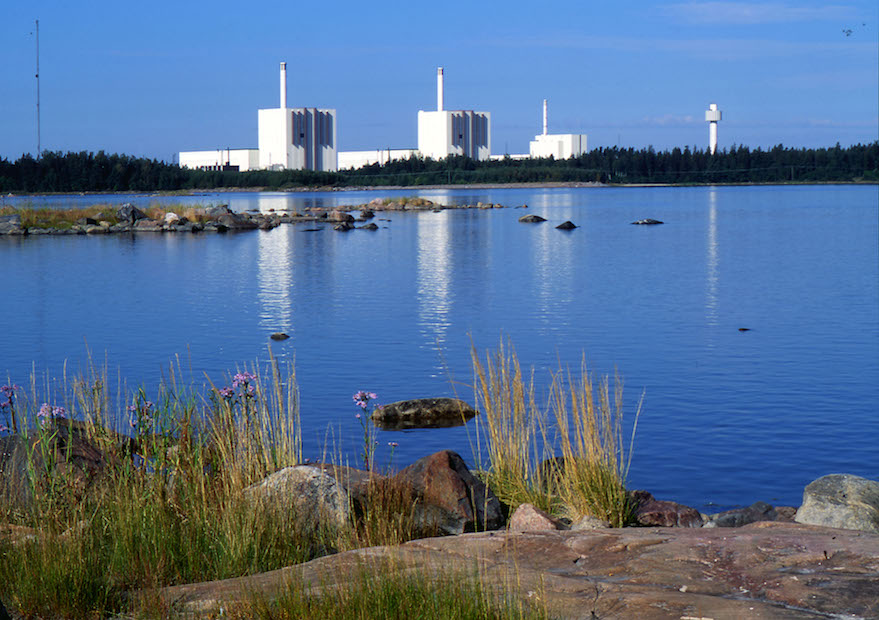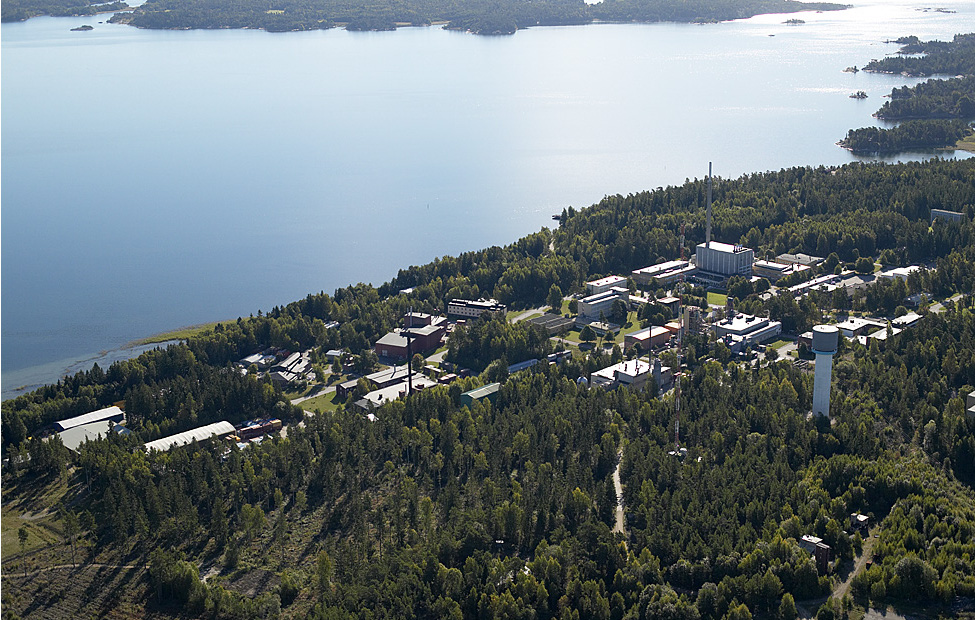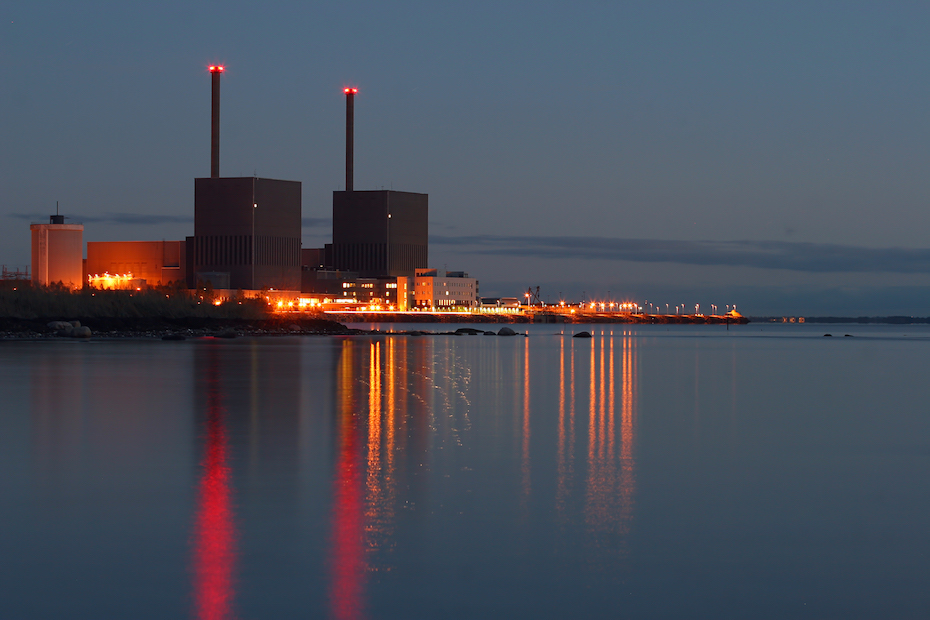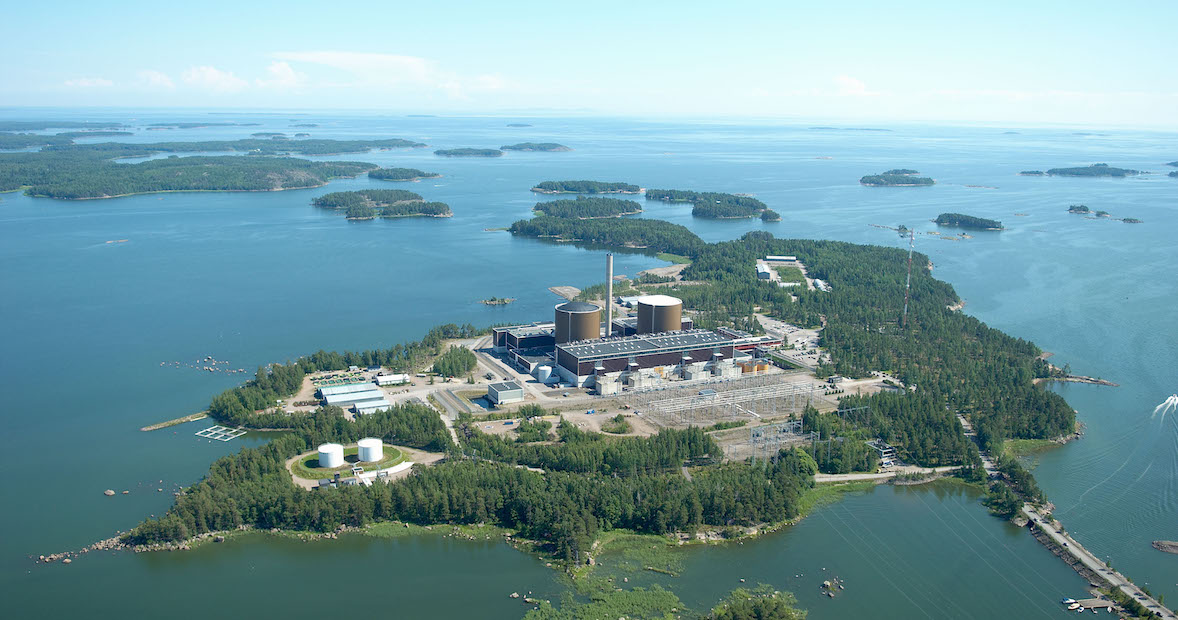KIKA Nuclear Cranes Seminar 2008 in Växjö
– Summary
A brief summary
The first international KIKA Nuclear Cranes Seminar gathered more than 60 lifting technology experts and users from two continents to Växjö in Sweden early November 2008. For all of you who were not able to attend the seminar, we have compiled a brief summary of the lectures and speeches.
Day 1:
KIKA is a Swedish and Finnish network for crane users in nuclear facilities. Kjell Andersson, secretary of KIKA, and Thomas Krüger from Inspecta Sweden AB started proceedings and Thomas Hagman, Ringhals Nuclear Power Plant, and Johan Dagnäs, OKG Power Plant gave a short presentation of KIKA.
KIKA was founded in 1999 to improve the contacts between professional crane users in the Swedish nuclear industry. The aim was to develop training methods and in house inspection procedures and to build up contacts with product manufacturers regarding inter alia technical requirements. In 2005 Finnish TVO and Loviisa joined KIKA.
KIKA holds one annual meeting in November, where work groups consider specific questions. Within KIKA the members communicate by e-mail to inform each other about near accidents and testing of new products or material.
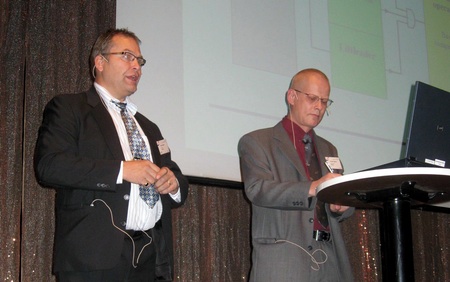
TVO Oyj is a privately owned Finnish power generation company which operates two nuclear power plant units in Olkiluoto and a coal-condensing power plant in Pori on the Finnish west coast. Mika Hassinen gave a survey of the existing units and presented Olkiluoto 3, the new 1600 MW PWR NPP delivered by Areva NP and Siemens for commercial operation in 2012.
There are some main arguments for the new project, for example replacement of old power plants, which enables the fulfilment of the Kyoto commitments and reduction of dependence on importing energy.
There will be 48 main cranes and elevators and 1690 other small lifting devices in the new plant. The largest cranes are the turbine hall main crane (500 t) and the polar crane (safety classed), 320 t.
The major safety regulations are part of Finnish YVL public guidelines from STUK (Finnish Nuclear Safety Authority) and German KTA rules. For cranes DIN15018, for rope drives DIN15020 and for cranes and accesses SFS EN 13586 standards are applied.
The design and dimensioning of all load-carrying parts are made for 60 years’ operation.
Inspecta Sweden AB is a Nordic group offering testing, inspection and certification services. Kjell Andersson and Walter Heinrich presented a number of analysed crane problems in Sweden. The cases regarding gear boxes, backup brakes and steel wire ropes are presented in a separate article together with contributions from other speakers.
Lufkin France SAS is a part of the Lufkin Industries Inc. group and a specialist of gear reducers and flexible gear couplings. It has broad experience of nuclear power plants in six countries. Lufkin representatives Olivier Breysse and Marcel Argenton presented the new gearboxes for Olkiluoto 3 in Finland.
The new gearboxes are manufactured according to Finnish YVL guidelines and the KTA 3902 standard. NDT test specifications must be prepared by COFREND level III qualified engineers, NDT inspections by level II qualified operators and approval of the procedures are given by project supplier AREVA and customer TVO.
The gearboxes are to be tested under partial load running tests with 75% tooth contact, which is verified by using red, heat and oil resistant varnish on the teeth.
Thousands of Lufkin couplings are installed in nuclear power plants. The company has a lot of experience of detecting and correcting misalignment and on-site services.
Stromag France SAS is a manufacturer of drive systems and power transmission components. In his presentation Claude Auffret focused on the disc brake systems designed and manufactured by Stromag for nuclear industry customers.
Service and emergency brakes play an important role in failure prevention in cranes operating in nuclear facilities. Stromag has developed so-called negative brakes, which are fail-safe in case of power failure. Other important features are overspeed detection and emergency stop.
Stromag has developed a questionnaire which helps to select the correct brake equipment regarding safety factors and dimensions.
The number and location of brake callipers has a significant impact on the stress on the brake disc and reaction forces on the drum shaft.

Wire Rope Technology in Germany is one of the world’s leading addresses for advanced know-how about steel wire ropes and reeving systems. Roland Verreet is one of the most initiated (and the funniest) experts on the properties of steel wire ropes for cranes.
Steel wire ropes are multiple redundant load-bearing elements – as parallel arrangement of load-bearing elements they can withstand a number of single element breaks and still not be discarded. However, the breaks must not be concentrated into one single point. Therefore it is important to make inspections in the right sections of the wire. Advanced electromagnetic instruments can help inspectors to monitor large sections.
Internal wire breaks are a problem. Visually only 20% of the cross-section of the rope can be inspected. High local contact stresses between the steel core and the outer strands can cause severe internal breaks and discarding of the wire. Adding a plastic layer between the core and the outer strands is one solution.
Parallel closed wire ropes are used in many nuclear facilities. The problem is that the core will break before the outer strands due to the design. The solution is to compact the wire elements at the contact surface between the core and the outer strands.
Corrosion is another problem that can be solved by using galvanized wires or by relubricating the rope wires. In addition this measure also decreases friction between the rope and the sheave, which also causes less twisting.
Roland Verreet also recommends that the groove angle of the sheaves should be greater than 45o to reduce rope twist. “Use the largest sheave diameter and the smallest rope diameter possible!”, he says.
Roland Verreet finished his presentation with an encouraging comment about this initiative to create a network between nuclear power plants.
This is a good way of increasing the lifting safety in nuclear business. He also referred to a similar network in another country,
but that network was reactively created following a big disaster.
The night of the Vikings.
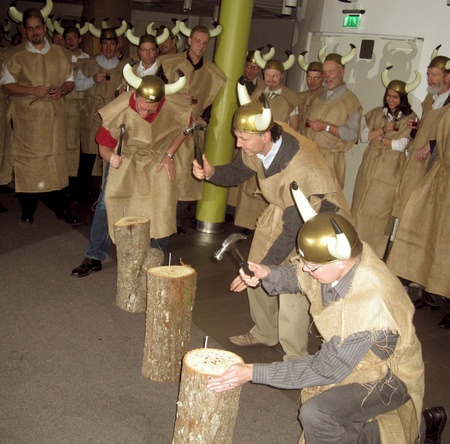
At the end of the day the international crowd of nuclear crane specialists was kidnapped by the ancient Viking Erik and his spouse Tova. The captured foreigners were taken into a dark cellar and dressed in sackcloth shirts and a horned Viking helmet. The rest of the evening is history and can best be recalled by looking at the photos…
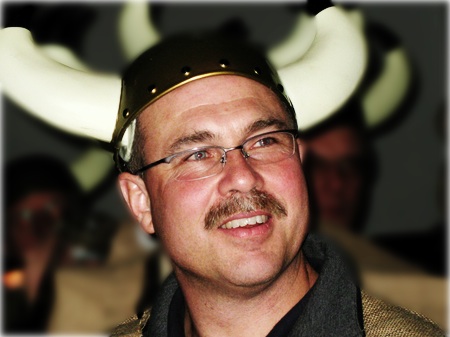
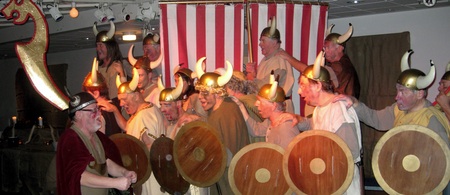
Day 2:
Noell NKM Special Cranes is a German manufacturer of cranes for special conditions. The company is a part of the French Reel group. Norbert Schilling and Uwe Fischlein enhanced the importance of safe lifting for all kinds of loads, not only heavy ones, at nuclear power plants.
Norbert Schilling explained the present situation for applicable German KTA-standards (see a special interview).
For a crane built according to the classification in accordance with “increased requirements” in KTA 3902-Section 4.3 the statistical probability of the crucial failure of uncontrolled dropping of the hoisted load is only 10-6/a, which corresponds to 1 in 1 000 000 cranes annually. An ordinary crane has a risk level of 10-3/a, corresponding to 1 in 1 000 cranes.
Classification of lifting equipment, e. g. polar cranes, gantry cranes, fuel handling machines, can be made for new installations, technical upgrades, partial retrofit and refurbishment of components, for example changing 20-year old analog systems into digital.
The most common method of creating a concept for single-failure proof hoists is to increase redundancy by designing twin systems, double independent rope reeving, twin brakes, compensating balancers etc.
The double mechanism chain still allows safe lifting and lowering of hoist load in case of failure in the gear reducer, or a break in drum coupling or stub shaft.
A single drive mechanism can still allow safe lowering and set-down of hoist load providing that there is a redundancy system for the rope reeving system with wire ropes and pulleys.
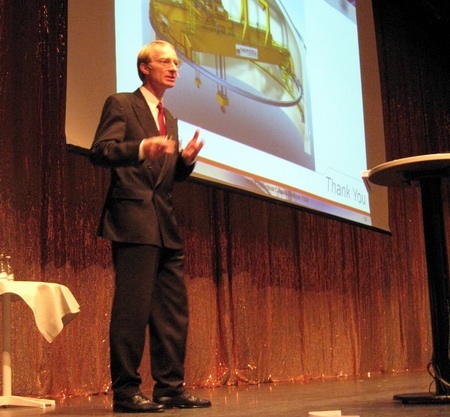
The British Nuclear Group was represented by Dai Davies (Mechanical) and Dave Charnock (control systems, electrical and instrumentation) from Sellafield Ltd that operates and manages Sellafield sites on behalf of the British Nuclear Decommissioning Authority. The operations include fuel recycling, fuel manufacture and waste management. At Sellafield there is a huge number of lifting devices of varying ages and conditions. The safety work therefore focuses on establishing a hierarchy of safety.
Primary hazard should be eliminated by design. Secondly one should utilise passive safeguards. Other measures are engineered dynamic protection measures, operational preventive measures, engineered mitigation systems and operational mitigation measures.
Simplicity, robustness and redundancy should always be the guidelines for mechanical design.
Limit switches, overload indication sensors, eddy current brakes and synchronous motors can prevent many failures. Using SIL (Safety Integrity Level) as a tool also increases safety.
EPA (Engineering Practicability Assessment) is used at Sellafield. The team responsible has undertaken an assessment of the credibility of the failure mechanisms identified and evaluated potential engineering solutions.
Among the most frequent risks are motor stall torque (up to 250%), poor response of overload protection and rotational inertia of hoist drive. Sellafield applies a so-called ALARP model (As Low As Reasonably Practicable) for the improvements.

Yavor Pachov from the French company Siguren Ingénerie is a crane design specialist. He presented new ideas which should reduce the possible risks in lifting. Siguren has also developed a new device, MotoSuiveur®, which is an alternative to the conventional safety brake.
The limit of tolerating unacceptable contamination outside the site is 10-6 per reactor, per year. This gives a reliability criterion of a few 10-7 per crane, per year for an accident involving release of radioactive material limited to site borders.
The most evident risks are found in fuel assembly (cask crane, FA elevator, pool crane) and in case of heavy load drops on FA, on cooling systems or on the primary loop (polar crane). The building for spent fuel is also critical.
Risk analysis is compulsory during the design phase and it should be completed by a functional analysis according to the EN 292-1 standard.
The EDF Books of Technical Specifications (BTS) and the Books of Technical Requirements (BTR) serve as a good basis for enhanced safety for nuclear cranes.
Siguren has identified the frictional brake as the main safety component on the hoist. To avoid problems with safety brakes the company has developed a new solution, the MotoSuiveur, which is attached to the drum. The new safety device contains an endless screw rotated by the motor and controlled by the signals delivered by the hoist motor. The inbuilt torque limiter acts as an absolute protection against two-blocking and load hang-up. In the case of abnormal speed or operation the main drive brake is automatically applied. Lowering and even lifting is permitted in the event of electrical or mechanical failure in the hoist.
Bradford P.Lytle works at NASA’s John F.Kennedy Space Center in Florida, and he is also a member of the ASME Committee on Cranes for Nuclear facilities. A separate interview with Mr Lytle is published on the KIKA website.
ASME has published a number of rules for the construction of gantry cranes and other hoists. There is a “consensus standard” created by the ASME Committee, which consists of representatives of owners of nuclear utilities, regulators (e.g. U.S. Nuclear Regulatory Commission), manufacturers of cranes, controls and other equipment, constructors of nuclear facilities, designers and consultants.
The resulting document meets broad requirements that can be enforced contractually.
The Type I equipment under ASME NOG-1-2004 (gantry cranes, top running lifting equipment) covers mechanical single-failure-proof design requirements and the lifting equipment is able to chain a load during an earthquake.
The Type IA equipment under ASME NUM-1-2000 (nuclear underhung and monorail cranes) is similar to the NOG-1 standard, while Type IB covers increased design factors and redundant components to minimise the potential for failure. As certain commercially available lifting equipment will satisfy the Type IB requirements the need for custom design will be lower, which reduces costs and saves time.
Most crane accidents in the United States are the result of mis-spooling, two-blocking, load hang-up, over-capacity lifting and component failure. More details are found in the technical paper ICONE-8077, X-Sam, The Single Failure Proof Crane System, by Jim Nelson PaR Nuclear.
Electronic controls are not adequately covered by crane standards, especially when microprocessor-based systems are used
New drives offer new capabilities and more precise load control.
Accidents occur faster than the reaction time of human beings
Parallel systems, where the supervisory PLC is connected beside the Flux Vector Drive (PES) are superior to serial systems, which are not single-failure proof. A Micro Watchdog PLC monitors the function and compares all input signals with the standard values and in cases of emergency activates the E-Stop or Shutdown system.
All parts will eventually fail, but a good control system design must accommodate these failures and keep the load safe.
Enhanced safety design means redundant mechanical load paths on the hoist, supervisory controls that independently monitor basic crane operations and a control system providing automatic safety shutdown. All these features lie outside the crane standards.
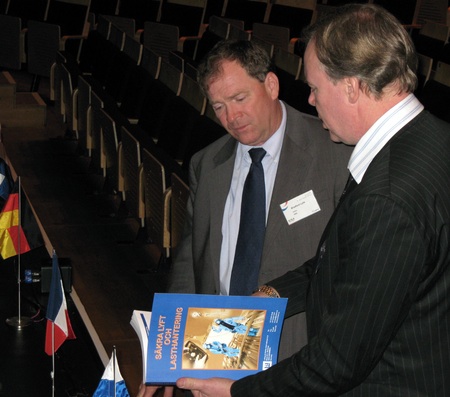
WANO, World Association of Nuclear Operators, is the umbrella organisation of the world’s leading operators of nuclear facilities. Steve Meng, Technical Programme Manager at the London office, presented the 11th SOER report (Significant Operating Experience Report) 2008-1 on Rigging, Lifting and Material Handling. The report contains an analysis of incidents concerning material handling equipment in the nuclear industry from 2004-2007. The aim is to help NPP crane operators to implement better safety procedures.
A separate interview with Steve is published on the KIKA website.
Chernobyl and the year 1986 are a part of our modern history. A lot of things have happened at the site and different types of cranes have been involved. Igor Chornyy from Chernobyl Nuclear Power Plant in Ukraine and Eric Schmieman from Battelle Memorial Institute in the United States told the audience about the basic facts of the accident and about the new safe confinement under construction. The consortium responsible for the project has specified a number of special tools, crane manipulators, carrier arms, jaw crushers, drills, dust collection systems and special tension trusses. The special conditions at the site demand a lot of remote-control solutions.
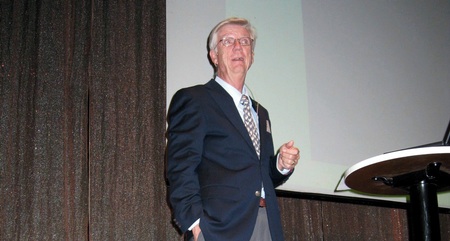
Ringhals, the nuclear power plant on the Swedish west coast, is operated by Vattenfall. An extensive modernisation project has been carried out in the last few years. Thomas Hagman from Ringhals and Markku Råman from Finnish Konecranes have gained a lot of interesting experience from the renovation of the cranes.
A total of 12 cranes have been renovated or changed since 2006
Safety brakes and double steel wire ropes have been installed. The drums are now equipped with fall protection. Separate emergency stops (remote) and load and position displays are installed.
Replacement of trolleys instead of modernisation.
Testing and inspection in factory conditions
A challenging project – assembly of a new trolley for the polar crane in the containment. A 2 ton hoist was used to finally lift a 40 ton trolley up on top of the polar crane bridge, which needed some innovative thinking.
The project had to be completed in only 8 days. Otherwise Konecranes would have to pay a considerable fine. Planning of the work stages was a problem until an animated 3D model was developed, which helped to verify all critical points and measures.
The animation could be used for timing at correct speed. The staff of Konecranes was able to train and simulate the various steps of the assembly process and the communication between all related parties was much easier and more efficient.
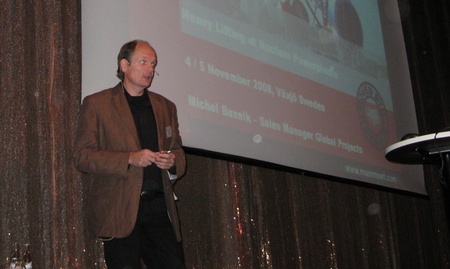
Mammoet from Holland is one of the legendary names of heavy lifting worldwide. Michel Bunnik, Sales Manager of Global Projects, has seen a number of demanding lifting and transport projects.
Mammoet operates the world’s biggest cranes. Some of the most impressive units are containerized to allow fast transport anywhere in of the world.
Ringhals in Sweden was Mammoet’s first nuclear experience back in 1972, followed by Confrentes in Spain
Steam generator replacements are made, for example, by using temporary lifting devices on the polar crane.
Mammoet also undertakes decommissioning of nuclear power plants including removal of pressure vessels. New heavier cranes with special load-spreading features have been introduced to serve the nuclear industry.
Day 3:
The international seminar guests had a unique opportunity to visit the canister laboratory of SKB, the Swedish Nuclear Fuel and Waste Handling Co, in Oskarshamn and to visit the Äspö Hard Rock Laboratory deep down in the Swedish primary rock.
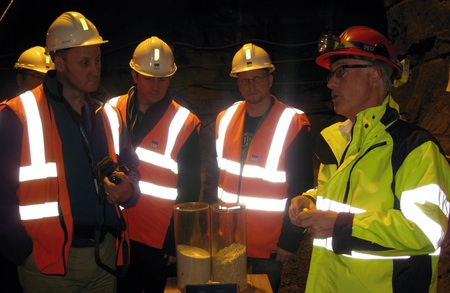
During the bus trip through the dark forests of the county Småland interrupted only by the light of the world famous glassworks Thomas Krüger, who literally took over the steering wheel, guided the foreign visitors into the history of Sweden. Danes and Swedes fought for years for this part of the world. The wars were interrupted by short periods of peace until the southern landscapes of the Scandinavian peninsula finally became a part of the royal Swedish kingdom in the 17th century. The life was tough and many Swedes from Småland decided to escape the hardship of the severe winters and emigrated to the United States.
The SKB Canister Laboratory, Oskarshamn, is located nicely at the shore of the Baltic Sea, the world’s largest brackish water basin. The group was guided through the laboratory and the welding process of the copper canisters was displayed in detail. The quality of the friction welded seams is inspected by NDT methods. A copper canister should survive for more than 100.000 years. A living proof of the durability of copper alloys was exposed outside the laboratory, a bronze cannon from the Royal HMS Kronan, which sunk in 1676 outside the Swedish coast. After 300 years under water the piece was almost in mint condition.
The foreign visitors were deeply impressed about the openness and transparency of SKB and the Swedish nuclear waste handling process.
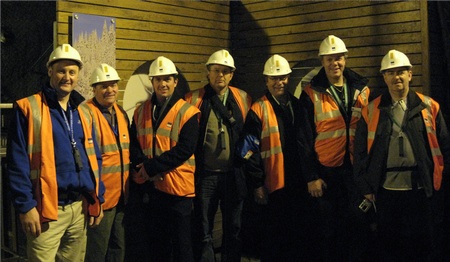
The Äspö Hard Rock Laboratory is a unique place. Special buses, designed for alpine roads, bring the visitors 460 meters below the surface, where the practical tests for final storage are performed.
The seminar participants were lucky – at the day of the visit full scale tests were carried out to test the new handling equipment for storage of the canisters in a vertical position. The handling system proved to be highly interesting for the foreign visitors.
Before taking the fast lift – 5 m/s – back in 92 seconds to the daylight the guests had a chance to test 7.000 year old water, slowly dropping out from the rock. Surprisingly enough the water proved to be bitterly salt – reminiscence from the stone age Littorina Sea, which preceded the present Baltic Sea. Small plastic bottles were filled and brought back home as a very exotic souvenir and as a symbol for a very special event, the first ever international seminar of KIKA.
